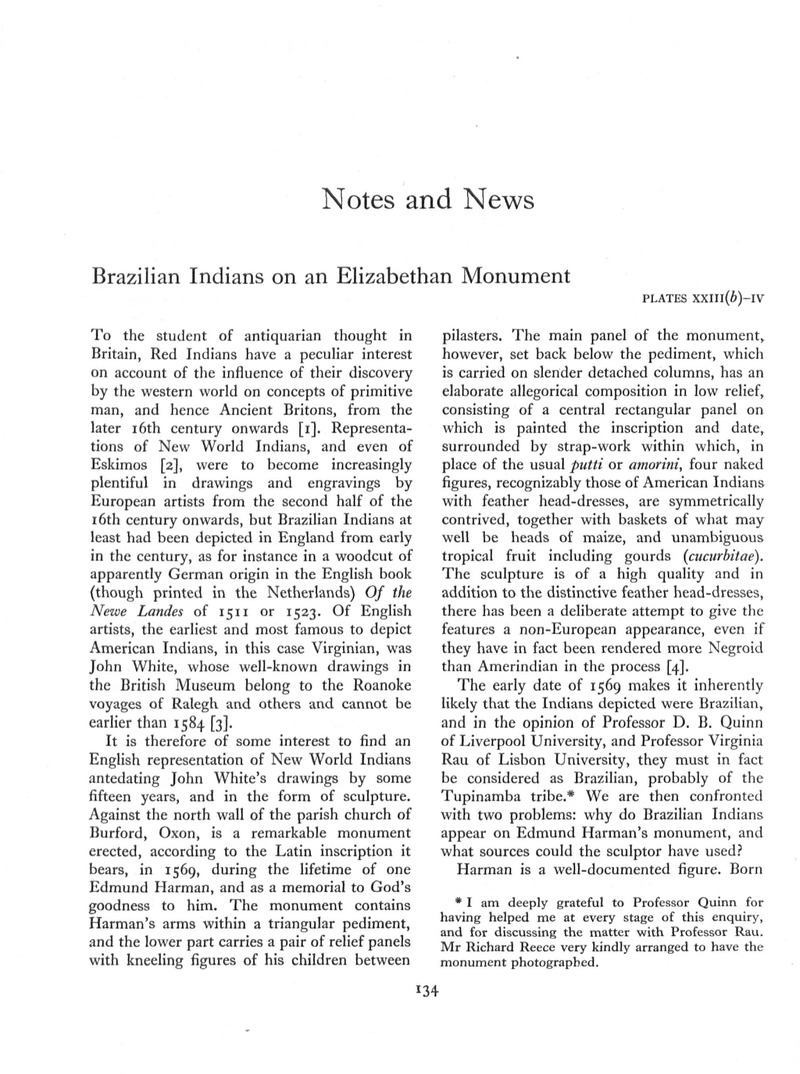No CrossRef data available.
Published online by Cambridge University Press: 02 January 2015

[1] Cf. Kendrick, T.D. British Antiquity (1950).Google Scholar
[2] Birket-Smith, K. ‘The Earliest Eskimo Portraits’, Folk, 1 (1959), 5.Google Scholar
[3] The John White drawings are well known (B. M. Cat. Drawings Brit. Artists, iv (1907), 326); nine were reproduced in the Walpole Society’s vol. XIII (1924–5), pis. xxiv-xxix, and some engraved in de Bry’s America (1590), together with others by Jacques Le Moyne.
[4] The monument has several times been referred to, and the ‘Red Indians’ mentioned without further comment: Gretton, R.H. thought it ‘dull and uninspired’ (The Burford Records (1920), 115).Google Scholar
[5] For Harman, cf. Young, S. Annals of the Barber-Surgeons of London (1890),Google Scholar passim, ; Sir d'Arcy Power in Proc. Royal Soc. Medicine, 9 (1915–6), 67;Google Scholar Gretton, The Burford Records (1920),Google Scholar passim. Harman’s will (P.C.C. 43 Daughtry) makes no mention of possible New World interests, and his burial is recorded on 10 April 1577 in the Taynton Parish Register (transcript in Bodleian Library MS Top. Oxon. c. 526: I owe this reference to Mr Howard Colvin).
[6] Mr Le Fanu and Mr Hall in litt., Dr Ruddock through Professor Quinn.
[7] Principal Navigations, XI (1904), 24.
[8] Oakeshott, W. Some Woodcuts by Hans Burgkmair (Roxburghe Club, 1960).Google Scholar
[9] Cortesão, A. and Da Mota, T. Portugaliae Monumenta Cartographia, 3 (Lisbon, 1960), no. 381.Google Scholar